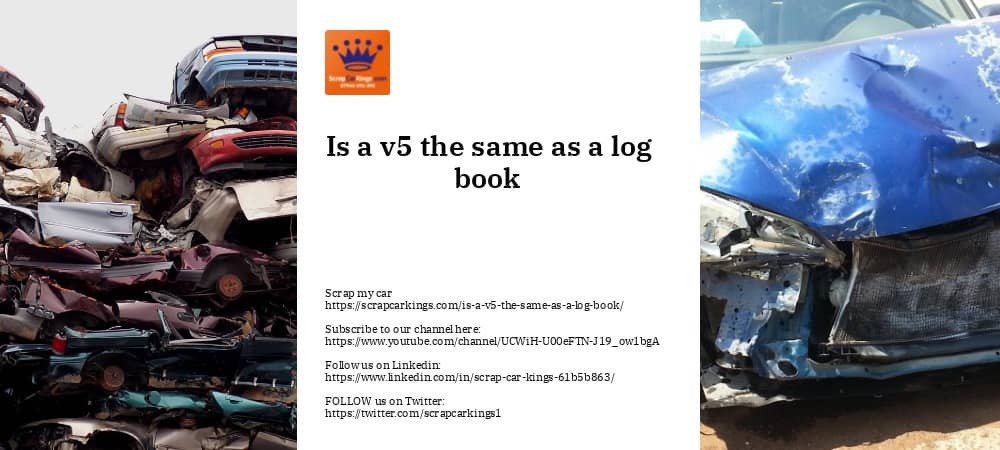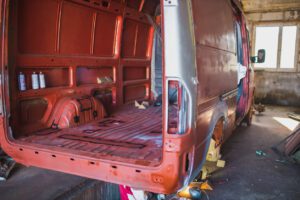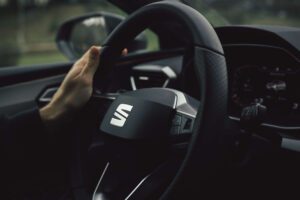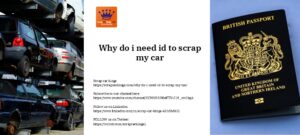What is a V5C vehicle log book?
The V5C is a document issued by the Driver and Vehicle Licensing Agency (DVLA) which proves that you are the registered keeper of a vehicle and contains vehicle details. The V5C is also known as the log book or by its old name, V5.
The V5C logbook contains all of the important information about your car, such as the make, model, colour, chassis number, engine size, and type of vehicle that is held by the DVLA on its database, and it proves that you are the car’s registered keeper, although it does not prove that you are the owner.
You can also find information about past keepers of the vehicle on the V5C. If you need to make any amendments to your car’s details, you can do so on the V5C. However, it should be noted that the V5C is largely a paper-based system.
If you sell your car privately, you must notify the DVLA and send them the V5C within 14 days of the sale. If you do not do this, you will continue to be liable for any parking fines or speeding penalties that the new owner incurs.
You should also tell your insurance company that you have sold the car so that they can cancel your policy. If you do not notify them, you may still be liable for any accidents that occur.
If you need to scrap your car but your V5C has been lost, damaged, or destroyed the process for scrapping a car without a log book is quite simple.The DVLA can issue you with a replacement V5C logbook document.
You can apply for this at the post office which may take up to six weeks but the fastest way to obtain a replacement is to apply online, which costs £25 and can be paid via a credit or debit card. Finally, you should notify DVLA if you move address so that they can update their records. All of this can be done easily online or by post.
How to scrap your car
Below is a quick summary of how to scrap your car
- Look online for a scrap car companies
- Go onto a scrap car quote form and enter your vehicle registration number & car details. Get a few quotes so you can find the best one
- Accept the best quote & arrange a free scrap car collection
- Provide the scrap car dealer with id eg a driving licence. see what kind of photo ID you need to scrap a car
- Get a receipt from the scrap car dealer
- Give them the V5 registration document retaining section 9. Complete section 9 of the V5C document (or section 4 on V5Cs issued after April 2019) and send it to the DVLA
- Contact your insurance company who will cancel the policy and provide you with a refund for any months of unused insurance
- You will receive a certificate of destruction within 7 days
What is a V5C used for?
A V5C logbook (vehicle logbook) is a document that is used by the DVLA when transferring a vehicle. The V5C is completed by the existing vehicle’s registered keeper and transferred to the new party. It is still possible to do this using the physical document or alternatively it can be completed online.
Interestingly, when a vehicle is sold or transferred to trade customer and the V5C/3 section is completed and returned to the DVLA the vehicle database is updated to show that the car in question is now in the motor trade and therefore does not have a current keeper assigned to it.
As soon as this vehicle is sold, the dealer has to notify the DVLA of the transaction so that the vehicle can then have a registered keeper again. This process ensures that there is always a registered keeper for every car on the road which helps with things like tracing owners of abandoned vehicles.
If you are going to export your car overseas and register it there, make changes to the vehicle, or it has been written off or scrapped your vehicle, you must notify the DVLA. The good news is that many of these services are now available online; however, the 11-digit reference number from the V5 document may be needed.
How to check that a V5C is real
Purchasing a vehicle is a big decision and it is important to make sure that all of the necessary paperwork is in order. The Vehicle registration document, also known as the Vehicle Registration Certificate, is one of the most important pieces of documentation.
This document proves that you are the registered keeper of the vehicle and it contains important information such as the vehicle identification number (VIN), engine code, and vehicle registration mark (VRM).
When you are looking at purchasing a vehicle, you should always check that the V5C document is genuine and that all of the details match up. To do this, you should look for the DVL watermark on the top of the document and a serial number in the top right-hand corner.
You can also verify the details of the vehicle online by retrieving the MOT history or contacting DVLA. If there are any discrepancies, you should not proceed with the sale and contact the authorities. By taking these simple steps, you can help to protect yourself when buying a new vehicle.
What does a V5C document include?
The following information is included in a V5 document:
- The date of the cars first registration
- Owner at the time of registration
- Last registered keeper
- A description of the vehicle including its model, its tax class, its engine size, its VIN/Chassis/Frame number, and its color.
- Changes to the official keeper or to the vehicle must be reported to the DVLA using the required forms. In addition, there are sections to complete if the car is scrapped or exported abroad permanently.
Can I find my V5C number online?
If you need to find your V5C reference number and don’t have the physical document, you have a few options. You can call the DVLA, go to a local DVLA office, or look through old paperwork. If you’re the registered keeper of the vehicle, you can also find the number on a V11 reminder. However, it’s important to note that you won’t be able to find this number online. So, if you’re looking for your V5C reference number, make sure to try one of the other options listed above.
What is Section 9 of the V5C?
Section Nine of the V5C is the section that must be completed when selling a vehicle to a motor trader, insurer or dismantler. Both the current owner and the new owner must sign this section. After Section 9 has been completed, the current keeper must send it to the DVLA, who will then transfer ownership of the vehicle to the new keeper.
It is important to keep in mind that, once a vehicle has been sold, the current keeper is no longer liable for any road tax or MOT that may be due on the vehicle. Therefore, it is essential to make sure that all outstanding road tax and MOT have been paid before completing Section 9 and sending it off to the DVLA. Failing to do so could result in costly fines.





